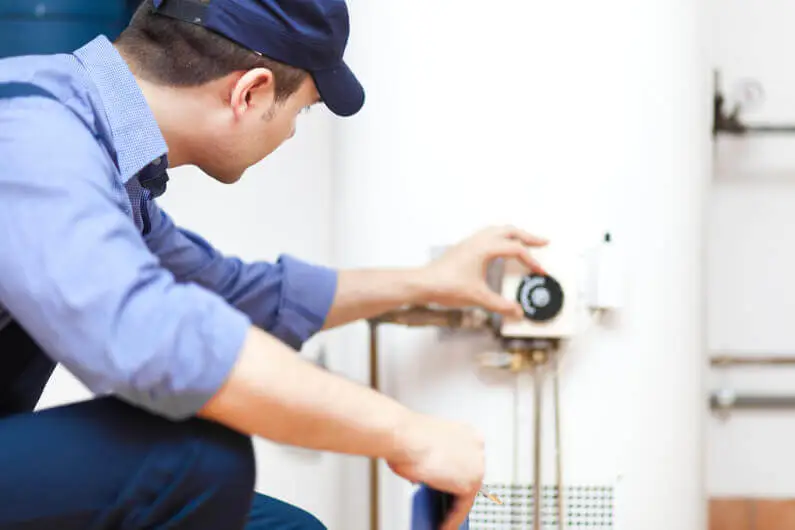
As beautiful as the City of the Violet Crown is, it's the most expensive city in the Lone Star State.
Case in point: Installing a new water heater in Austin, Texas is over $100 higher than the national average. The countrywide average price is only $1,117, while in Austin, it's a whopping $1,250.
This is why it pays to have and follow a comprehensive water heater maintenance checklist. By maintaining your water heater, you can prevent problems from occurring early. Ultimately, this will help lengthen the life of your current heater.
Doing so not only lets you keep enjoying hot water. It also helps you avoid pricey repairs or replacing your heater earlier than you should.
Ready to learn the tricks to make your water heater last longer and run efficiently? Then let's dive right into it!
Perform A Visual Inspection
Every year, plumbing leaks in an average home wastes up to 10,000 gallons of water. Plumbing pipe leaks, which are very common plumbing problems, contribute to this wastage. However, an old or corroded water heater tank can also be a culprit.
Moreover, leaks in the tank could also be the reason your water heater isn't working right. Leaks could cause water temperature fluctuations and low water pressure. They may even be the reason water doesn't come all the way up to your home's second floor!
As such, a once- or twice-a-year visual checks of your tank should be part of your water heater maintenance. Check for loose screws, nuts, and bolts, as well as aged gaskets, as these can allow water to come out. Look for any signs of rust, corrosion, or pooled water under the tank too.
Securing plumbing fasteners, like screws and bolts, is one of the plumbing tasks you can do on your own. If your tank has too many corroded parts, however, it's best to call a water heater repair technician.
Flush The Heater A Couple Of Times A Year
Water that contains calcium carbonate (CaCO3) at a concentration of over 180 mg/l is already "very hard." While hard water rarely causes health effects, heating it up leads to the formation of scale. This can then reduce the efficiency of your heater, cut its life short, and make your heating costs go up.
The bad news is, Austin has very hard water, with its average CaCO3 concentrations exceeding 180 mg/l.
If you haven't yet, consider having a whole-home water softener and filter installed. Softeners will help reduce sediment build-up, while filters will help minimize contaminants.
As part of your hot water heater maintenance though, drain the tank at least twice a year. Then, flush it once or twice with clean water to get rid of any sediment or debris in the tank.
Make Sure the Pressure Relief Valve Works
All gas and some electric water heaters have a temperature and pressure relief valve. A T&P valve is a safety device designed to open and release excess temperature and pressure inside the tank. If the temp and pressure exceed the benchmark (usually 210° F/150 psi), the valve should open right away.
Otherwise, the tank's temperature and excessively high pressure can make it go boom. While many people don't think this can happen, it can, albeit only in very rare instances. Still, that's a possible risk you don't want to take since an exploding tank can cause serious injuries.
Keep in mind that as the water heats up, it transforms into a gas (the pressure). The more and the longer you use the water heater, the hotter the tank gets and the more pressure that builds up. When the tank can't stand it anymore, it triggers the T&P valve to open so it can let out the excess energy and pressure.
A damaged or blocked valve can stop this from happening. Without a way out, the heat and the pressure will continue to build up inside the tank.
That's why it's vital to include a T&P valve test in your yearly water heater maintenance schedule.
To start your T&P valve inspection, shut off the gas or electricity first. Position a bucket right under the valve to catch the water. Then, pull the valve's trip lever: some water, vapor, and a rush of air should easily come out.
If not, or the valve doesn't open or is stuck, it's best to get it replaced. Contact your Austin water heater repair specialists to complete the job safely.
Replace The Anode Rod Every Three To Five Years
An anode rod is a "sacrificial" device that prevents the inside of the water heater from corroding. It's a steel tube made of either aluminum, magnesium, or zinc. The rod goes on top of the water heater and attracts elements in the water that causes oxidation.
Without the anode rod, the lining of your water heater tank will corrode faster. That's why this tube is also known as the "sacrificial anode rod." The metal in it rusts faster than the tank's lining, so oxidizing elements get attracted to it first.
This sacrifice is what makes anode rods last only for three to five years. It'll last shorter if there's more oxygen in the tank, which can happen if there are cracks in the tank. Rust-colored water and a metallic taste in the water are dead giveaways that you need to replace this rod.
It's best not to wait for this to happen though, as this means putting your tank itself at risk of corrosion. So, include a yearly inspection of the rod in your hot water heater maintenance tasks. You may need to replace it before three to five years if a big portion of the rod is already rusted.
Follow This Water Heater Maintenance Checklist Now
As you can see, water heaters don't require a lot of attention and upkeep, unlike other appliances you have. At most, you would need to drain and clean your water tank at least twice a year.
However, it's vital that you follow everything in this water heater maintenance checklist. This way, you can spot potential problems before they worsen and cause your heater to die early. Besides, it'll help you check for and fix water leaks before they make your water bills skyrocket.
Do you have a leaky or malfunctioning water heater? Then our team here at Mr. Rooter can help! Request for a job estimate now and we'll get back to you ASAP.

About the Author: Brett Bidwell, Mr. Rooter Plumbing of Austin
Brett has been a trusted Mr. Rooter owner of Mr. Rooter Plumbing of Austin since 2012. With over 8 years to back him, Brett has experience with a wide range of plumbing related solutions and systems. He and his team specialize in emergency plumbing, drain cleaning, and more.

